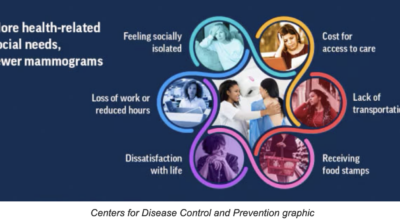Mind and Body: October is SIDS Awareness Month
Published 9:00 am Monday, October 23, 2017
Clark County Health Department
While the prevalence of sudden infant death syndrome (SIDS) in the United States has decreased by 50 percent over the last 20 years, SIDS remains the leading cause of death for U.S. infants 1 month to 1 year of age. This SIDS Awareness Month, the NICHD highlights SIDS resources and research to help parents, caregivers, and medical professionals reduce the risk of SIDS.
SIDS is defined as the sudden, unexplained death of an infant younger than 1 year of age that remains unexplained after a thorough case investigation. This includes a complete autopsy, a full examination of the death scene, and a review of the infant’s and family health history.
The exact cause of SIDS remains unknown. Researchers suspect multiple conditions may lead to SIDS, but there are many ways to reduce a baby’s risk.
The NICHD has been a leader in research on SIDS since the early 1970s. The Institute’s efforts include studies on the causes and mechanisms of SIDS, research on the incidence and prevalence of SIDS, and outreach designed to educate parents and caregivers about ways to reduce SIDS risk.
Myths and Facts
Myth: Babies can “catch” SIDS.
Fact: A baby cannot catch SIDS. SIDS is not caused by an infection, so it can’t be caught or spread.
Myth: Cribs cause “crib death” or SIDS.
Fact: Cribs themselves do not cause SIDS. But features of the sleep environment — such as a soft sleep surface — can increase the risk of SIDS and other sleep-related causes of infant death. Find out more about what is a safe sleep environment for your baby.
Myth: Babies who sleep on their backs will choke if they spit up or vomit during sleep.
Fact: Babies automatically cough up or swallow fluid that they spit up or vomit — it’s a reflex to keep the airway clear. Studies show no increase in the number of deaths from choking among babies who sleep on their backs. In fact, babies who sleep on their backs might clear these fluids better because of the way the body is built.
Myth: SIDS can be prevented.
Fact: There is no known way to prevent SIDS, but there are effective ways to reduce the risk of SIDS.
Myth: Shots, vaccines, immunizations, and medicines cause SIDS.
Fact: Recent evidence suggests that shots for vaccines may have a protective effect against SIDS. All babies should see their health care providers regularly for well-baby checkups and should get their shots on time as recommended by their health care provider.
Myth: SIDS can occur in babies at any age.
Fact: Babies are at risk of SIDS only until they are 1 year old. Most SIDS deaths occur when babies are between 1 month and 4 months of age. SIDS is not a health concern for babies older than 1 year of age.
Myth: If parents sleep with their babies in the same bed, they will hear any problems and be able to prevent them from happening.
Fact: Because SIDS occurs with no warning or symptoms, it is unlikely that any adult will hear a problem and prevent SIDS from occurring. Sleeping with a baby in an adult bed increases the risk of suffocation and other sleep-related causes of infant death.
Sleeping with a baby in an adult bed is even more dangerous when:
— The adult smokes cigarettes or has consumed alcohol or medication that causes drowsiness.
— The baby shares a bed with other children.
— The sleep surface is a couch, sofa, waterbed, or armchair.
— There are pillows or blankets in the bed
— The baby is younger than 11 weeks to 14 weeks of age.
— The baby shares a bed with more than one person, especially if sleeping between two adults.
Instead of bed sharing, health care providers recommend room sharing — keeping baby’s sleep area separate from your sleep area in the same room where you sleep. Room sharing is known to reduce the risk of SIDS and other sleep-related causes of infant death.
For more information about SIDS visit www.nichd.nih.gov.
Clark County Health Department supports families through a variety of programming and services. For more information, call 744-4482.
or visit www.clarkhealthdept.org.
You can also like us on Facebook or follow us on Twitter.
Article information taken from: www.nichd.nih.gov





